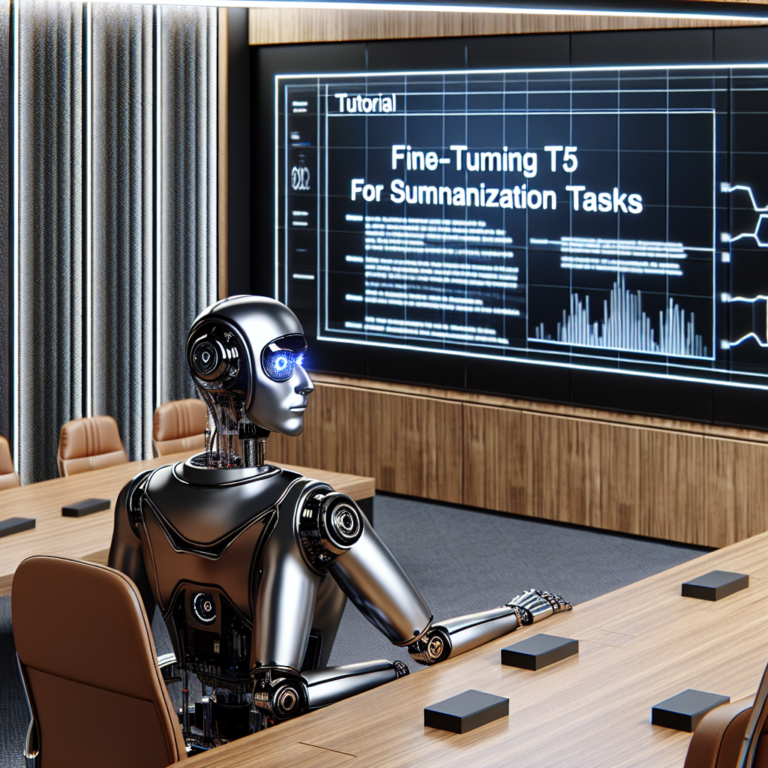1. Understanding BERT and Its Architecture
BERT (Bidirectional Encoder Representations from Transformers) is a groundbreaking model in the field of natural language processing (NLP). Developed by Google, BERT’s architecture is designed to pre-train deep bidirectional representations by conditioning on both left and right context in all layers. As a result, the pre-trained BERT model can be fine-tuned with just one additional output layer to create state-of-the-art models for a wide range of tasks, such as question answering and language inference, without substantial task-specific architecture modifications.
BERT’s core mechanism is a multi-layer bidirectional Transformer encoder. Based on the original Transformer model architecture, it uses attention mechanisms to understand the contextual relations between words (or sub-words) in a text. Unlike directional models, which read the text input sequentially (left-to-right or right-to-left), the Transformer encoder reads the entire sequence of words at once. Therefore, BERT considers the full context of a word by looking at the words that come before and after it—making it deeply bidirectional.
The model is pre-trained on two tasks: masked language modeling (MLM) and next sentence prediction (NSP). In MLM, random words in a sentence are replaced with a mask token, and the model needs to predict the original word based on the context. The NSP task trains the model to predict whether two given sentences logically follow each other, which is crucial for understanding the relationship between consecutive sentences.
This architecture has proven to be incredibly effective, leading to improvements in a wide array of NLP tasks. The ability of BERT to handle “context-heavy” tasks is primarily due to its deep sense of bidirectional understanding, setting it apart from previous models that treated text sequences in a unidirectional way.
Understanding the architecture and functionality of BERT is essential for effectively fine-tuning the model on specific tasks, which will be covered in subsequent sections of this guide.
2. Preparing Your Dataset for BERT Fine-Tuning
Before you can start fine-tuning BERT, the quality and preparation of your dataset are crucial. Here’s how to prepare your dataset effectively:
1. Data Collection: Gather a comprehensive dataset that is relevant to your specific NLP task. This could be text data from websites, customer feedback, or any other textual content that is pertinent to the problem you are addressing.
2. Data Cleaning: Clean your dataset to remove noise and irrelevant information. This includes stripping out HTML tags, correcting typos, and removing non-textual elements. Ensuring the cleanliness of your data will significantly impact the model’s learning quality.
3. Tokenization: BERT uses WordPiece tokenization, so you must convert your cleaned text data into tokens that BERT can process. This involves splitting the text into words, subwords, or symbols (like punctuation) that exist in the BERT vocabulary.
4. Formatting Input Data: Format your data into a structure that BERT can understand. This includes two segments:
– Input IDs: A sequence of integers representing the tokens in the vocabulary.
– Attention Masks: A sequence of 1s and 0s indicating which tokens should be attended to, and which should not.
5. Creating Training and Validation Splits: Divide your dataset into training and validation sets to evaluate the model’s performance during the fine-tuning process. A typical split might be 90% for training and 10% for validation, but this can vary based on your dataset size and diversity.
Proper preparation of your dataset is a foundational step in leveraging the full capabilities of BERT for your NLP tasks. By ensuring your data is well-prepared, you set the stage for effective model training and fine-tuning.
3. Setting Up the Fine-Tuning Environment
Setting up the right environment for fine-tuning BERT is critical to ensure efficient training and optimal results. Here’s how to configure your environment:
1. Hardware Requirements: Fine-tuning BERT is resource-intensive. Ideally, you should use a machine with a high-performance GPU. NVIDIA GPUs with CUDA support can significantly speed up the training process.
2. Software Dependencies: Install Python and necessary libraries such as TensorFlow or PyTorch. These frameworks support BERT and provide the necessary tools for model manipulation and training.
3. Setting Up the Development Environment: Use an Integrated Development Environment (IDE) like Jupyter Notebook or Google Colab for interactive programming and visualization. These platforms also facilitate easy sharing of the project with peers or in the cloud.
4. Loading the Pre-trained BERT Model: Load a pre-trained BERT model from libraries like Hugging Face’s Transformers. This step is crucial as it provides the foundational weights and architecture for further fine-tuning.
# Example of loading BERT model using Hugging Face Transformers
from transformers import BertModel, BertTokenizer
model = BertModel.from_pretrained('bert-base-uncased')
tokenizer = BertTokenizer.from_pretrained('bert-base-uncased')
5. Environment Testing: Before starting the fine-tuning process, run a test to ensure that all components are working correctly. This test can include a simple forward pass of the model using a sample input.
Properly setting up your fine-tuning environment not only facilitates smoother training but also helps in achieving better model performance and reproducibility of results.
4. The Fine-Tuning Process: Step-by-Step Guide
Fine-tuning BERT for your specific tasks involves several critical steps. Here’s a straightforward guide to help you through the process:
1. Load the Pre-trained BERT Model: Start by loading a pre-trained BERT model. This model has already learned a vast amount of information about language and will serve as the foundation for your task-specific training.
2. Prepare the Input Data: Ensure your data is formatted correctly for BERT. This includes tokenization, creating attention masks, and segmenting the data into manageable sizes.
3. Define the Task-Specific Layers: Add any layers specific to your task, such as a classification layer on top of the BERT model, depending on whether you are performing tasks like sentiment analysis or question answering.
4. Set Hyperparameters: Choose appropriate hyperparameters for training. This includes learning rate, number of epochs, and batch size. These parameters can significantly affect your model’s performance, so they may require some experimentation.
# Example of setting hyperparameters in Python learning_rate = 2e-5 num_epochs = 3 batch_size = 32
5. Initiate Fine-Tuning: Begin the training process by feeding your prepared data into the model. Monitor the training closely to adjust parameters and optimize performance as needed.
6. Evaluate and Iterate: After training, evaluate the model’s performance on a separate validation set. If the results are unsatisfactory, consider adjusting your approach and retraining the model.
By following these steps, you can effectively fine-tune BERT to meet the needs of your specific application, enhancing its ability to understand and process language in ways that are most beneficial for your tasks.
5. Evaluating Model Performance Post-Fine-Tuning
After fine-tuning BERT, it’s crucial to evaluate the model’s performance to ensure it meets the expected standards for your specific tasks. Here are key steps and metrics to consider:
1. Accuracy: Measure how often the model predicts the correct output. High accuracy is essential for tasks like classification.
2. Precision and Recall: Evaluate the precision (the proportion of positive identifications that were actually correct) and recall (the proportion of actual positives that were identified correctly). These metrics are particularly important in scenarios where the balance between false positives and false negatives is critical.
3. F1 Score: Use the F1 score to find the balance between precision and recall. It is the harmonic mean of precision and recall and is a better measure when the class distribution is uneven.
4. Loss Metrics: Monitor the loss during training and validation phases. A decreasing trend in loss indicates that the model is learning effectively, while any anomalies might suggest issues with the model setup or data.
# Example of calculating F1 score in Python
from sklearn.metrics import f1_score
y_true = [0, 1, 1, 0, 1]
y_pred = [0, 1, 0, 0, 1]
f1 = f1_score(y_true, y_pred)
print(f"F1 Score: {f1}")
5. Real-world Testing: Beyond numerical metrics, test the model in real-world scenarios to see how it performs with actual data it hasn’t seen before. This can reveal insights that lab metrics might miss.
Evaluating these metrics will help you understand the strengths and weaknesses of your fine-tuned BERT model, guiding further refinements and ensuring it is robust enough for deployment.
6. Advanced Techniques in BERT Fine-Tuning
Once you’re comfortable with the basics of fine-tuning BERT, you can explore advanced techniques to enhance your model’s performance. These methods can help tackle more complex tasks or improve efficiency and accuracy:
1. Hyperparameter Optimization: Experimenting with different sets of hyperparameters can significantly impact your model’s effectiveness. Techniques like grid search or Bayesian optimization can automate this process, helping you find the optimal settings faster.
2. Layer Freezing: In some cases, fine-tuning all layers of the BERT model might lead to overfitting, especially with smaller datasets. Freezing the weights of the initial layers, which generally capture more general information, and only fine-tuning the top layers can improve performance.
3. Using Domain-Specific Pre-training: Before fine-tuning BERT on your task-specific data, you can pre-train the model further on a large corpus that is closely related to your domain. This step, known as domain-adaptive pre-training, helps the model better understand context specific to your field.
# Example of layer freezing in Python using Hugging Face Transformers
from transformers import BertModel
model = BertModel.from_pretrained('bert-base-uncased')
# Freeze the first 8 layers
for layer in model.encoder.layer[:8]:
for param in layer.parameters():
param.requires_grad = False
4. Knowledge Distillation: This technique involves training a smaller, more efficient model (the student) to replicate the behavior of a larger pre-trained model (the teacher). Knowledge distillation can be particularly useful when deploying models to environments with limited resources.
5. Data Augmentation: Expanding your dataset artificially by techniques such as back-translation, synonym replacement, or text generation can provide more diverse examples during training, leading to a more robust model.
Implementing these advanced techniques in BERT fine-tuning not only enhances the model’s accuracy but also its applicability to specific or challenging NLP tasks. Each technique requires careful implementation and testing to ensure it aligns with your specific objectives and data conditions.
7. Troubleshooting Common Issues in BERT Fine-Tuning
When fine-tuning BERT, you may encounter several common issues that can hinder your model’s performance. Addressing these effectively is crucial for achieving optimal results.
1. Overfitting: This occurs when the model learns the training data too well, including its noise and outliers, which can degrade its performance on new, unseen data. To combat overfitting:
– Increase the dataset size.
– Use dropout and regularization techniques.
– Simplify the model by reducing the number of layers or parameters.
2. Underfitting: Underfitting happens when the model is too simple to learn the underlying pattern of the data. To resolve underfitting:
– Increase model complexity by adding more layers or parameters.
– Decrease regularization.
– Extend the training period.
3. Vanishing Gradients: This issue is common in deep neural networks where gradients, used in training via backpropagation, become very small, effectively preventing weights from changing their values. This can be mitigated by:
– Using different initialization methods for weights.
– Employing batch normalization.
– Utilizing activation functions like ReLU, which help in maintaining a healthy gradient flow.
4. Diverging Loss During Training: If the loss increases instead of decreasing, this might be due to an excessively high learning rate or an inappropriate optimizer. Adjustments to consider:
– Lower the learning rate.
– Switch to a more robust optimizer like Adam or RMSprop.
By understanding and addressing these common issues, you can significantly improve the effectiveness of your BERT fine-tuning process. Each problem has a set of potential solutions, and selecting the right one depends on the specific circumstances and characteristics of your training data and model setup.
8. Case Studies: Successful Applications of Fine-Tuned BERT Models
Fine-tuned BERT models have been successfully applied across various domains, demonstrating their versatility and power. Here are some impactful case studies:
1. Healthcare: BERT has been used to improve the understanding of patient data. For instance, fine-tuning BERT on clinical notes helped in predicting patient diagnoses more accurately than traditional models.
2. Legal Industry: In legal document analysis, BERT models fine-tuned on specific legal terminology and case files have enhanced the efficiency of document review processes, saving time and reducing human error.
3. Customer Service: BERT has transformed customer service by powering chatbots and virtual assistants. These models are fine-tuned on specific company data to provide more accurate responses and improve customer interaction.
4. Financial Services: For sentiment analysis of financial news, BERT models fine-tuned with financial lexicons have been used to predict market movements more reliably, aiding investment strategies.
These case studies illustrate the broad applicability of BERT in tackling complex, real-world problems across different industries. By fine-tuning BERT, organizations can leverage state-of-the-art AI to enhance decision-making and operational efficiency.



